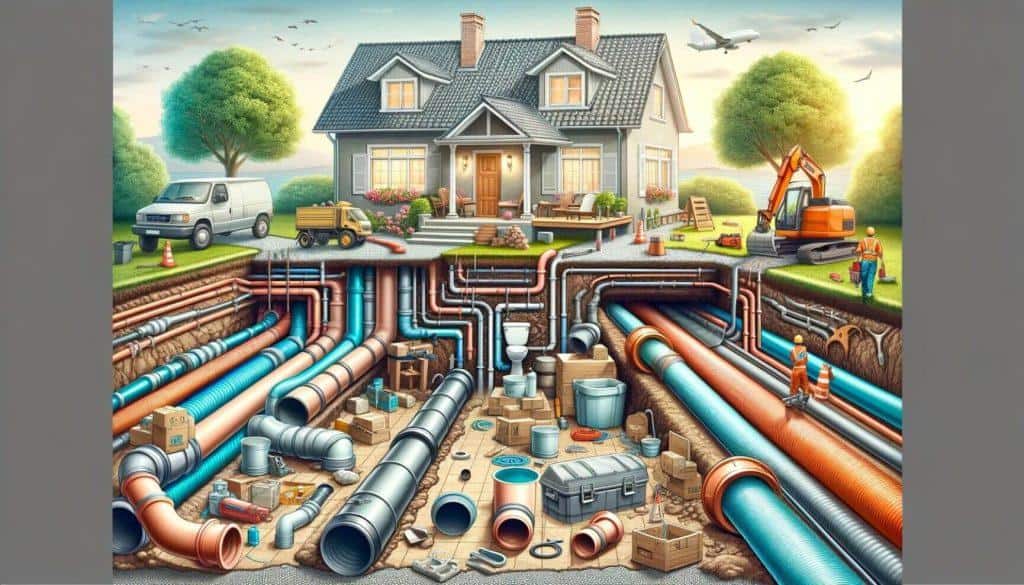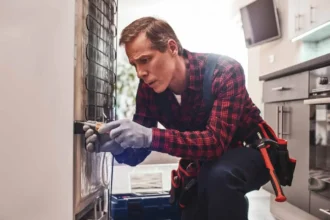Urban plumbing systems are the unsung heroes of our daily lives, silently managing the waste we produce. However, the evolution of waste—grease-heavy diets, the ubiquity of wet wipes, and deteriorating infrastructure have introduced new challenges. Hydro jetting services have emerged as a powerful solution, employing high-pressure water to cleanse pipes and restore flow. Let’s delve into how this technology is revolutionizing urban plumbing.
The Modern Waste Conundrum
Grease-Heavy Diets and Kitchen Habits
Our contemporary culinary preferences, rich in oils and fats, have unintended consequences for plumbing systems. When grease is washed down the drain, it cools and solidifies, adhering to pipe walls and accumulating over time. This buildup narrows the passageways, leading to slow drains and eventual blockages.
The Rise of “Flushable” Wet Wipes
Despite being marketed as flushable, many wet wipes do not disintegrate like toilet paper. Instead, they persist in the sewage system, entangling with other debris to form massive obstructions known as “fatbergs.” These conglomerates are notorious for causing significant blockages in urban sewer systems.
Aging Infrastructure in Urban Centers
Many cities grapple with outdated plumbing infrastructure, with pipes that have been in place for decades. These aging systems are ill-equipped to handle the increased volume and complexity of modern waste, making them more susceptible to clogs and failures.
Why Traditional Methods Fall Short
Snaking vs. Hydro Jetting
While snaking can be effective for minor clogs, it often fails to address the underlying buildup on pipe walls. Hydro jetting, on the other hand, removes all debris, providing a more permanent solution.
Limitations of Chemical Solutions
Chemical drain cleaners can be corrosive, damaging pipes over time. They also pose environmental hazards and may not effectively dissolve certain types of blockages.
Cost of Repeated Clogs
Frequent clogs lead to repeated service calls and repairs, which can be costly. Investing in hydro jetting services can save money in the long run by reducing the need for constant maintenance.
The Mechanics of Hydro Jetting
Hydro jetting equipment comprises a high-pressure hose, a specialized nozzle, and a water tank. The nozzle is designed to direct water jets both forward and backward, ensuring thorough cleaning.
PSI and Nozzle Variations
The pressure used in hydro jetting can be adjusted based on the severity of the clog and the condition of the pipes. Different nozzles are available for various applications, such as removing grease, cutting through tree roots, or descaling mineral deposits.
Safety and Efficiency Factors
Professional plumbers conduct a video inspection before hydro jetting to assess the pipe’s condition and determine the appropriate pressure and nozzle type. This precaution ensures the process is safe and effective.
Is Hydro Jetting Safe for All Pipes?
Hydro jetting is generally safe for most plumbing systems. However, it’s crucial to assess the condition of the pipes beforehand.
Pipe Materials That Can Handle the Pressure
- PVC and ABS: Common in modern plumbing, these materials can withstand hydro jetting.
- Cast Iron: Durable and often found in older homes, cast iron pipes are suitable for hydro jetting if they’re in good condition.
When Inspection Is Necessary
A video inspection helps identify any weaknesses, cracks, or corrosion that could be exacerbated by high-pressure water.
Avoiding Damage Through Proper Diagnostics
Professional plumbers adjust the pressure settings based on the pipe material and condition, ensuring a safe and effective cleaning process.
Hydro Jetting for Businesses and Restaurants
Commercial establishments, particularly those in the food industry, benefit significantly from hydro jetting services.
How Commercial Kitchens Benefit
Grease and food particles are common culprits in commercial kitchen clogs. Hydro jetting effectively removes these substances, preventing disruptions in operations.
Monthly Maintenance and Prevention
Regular hydro jetting ensures that pipes remain clear, reducing the risk of unexpected blockages and costly downtime.
Case Study Examples
Restaurants that have implemented routine hydro jetting report fewer plumbing issues, improved sanitation, and enhanced customer satisfaction.
Future of Urban Plumbing and Hydro Jetting
Advancements in technology continue to enhance hydro jetting services.
Smart Plumbing and Remote Diagnostics
Integration with smart sensors allows for real-time monitoring and proactive maintenance.
Integration with City Infrastructure
Municipalities are adopting hydro jetting to maintain public sewer systems, reducing the incidence of large-scale blockages.
Ongoing Waste Challenges
As waste composition evolves, hydro jetting remains a versatile tool in addressing new plumbing challenges.
Conclusion
Hydro jetting has emerged as a vital solution in the battle against modern plumbing challenges. Its ability to thoroughly clean pipes, prevent future clogs, and do so in an environmentally friendly manner makes it an indispensable tool for both residential and commercial plumbing systems. As urban waste continues to evolve, embracing advanced solutions like hydro jetting ensures our plumbing infrastructure remains robust and reliable.
FAQs
- How often should hydro jetting be done?
For residential properties, hydro jetting every 18 to 24 months is typically sufficient. Commercial establishments may require more frequent services, depending on usage. - Is hydro jetting safe for older homes?
Yes, but it’s essential to conduct a video inspection first to assess the condition of the pipes and ensure they can withstand the pressure. - How long does a hydro jetting session take?
Most hydro jetting services can be completed within 1 to 2 hours, depending on the severity of the blockage and the length of the pipes. - Can hydro jetting remove tree roots?
Absolutely. Hydro jetting is effective at cutting through and removing tree roots that have infiltrated sewer lines.

















